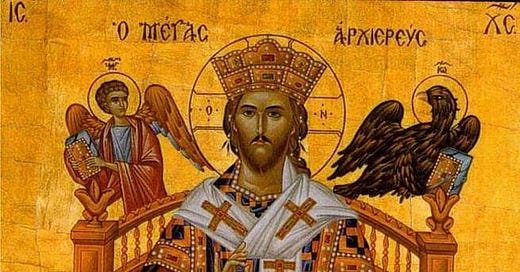The Eucharist proves the communal ontology. This is true in an incredibly literal and exclusively Christian way. Bread and wine are not the body and blood of Christ. And yet, in the Eucharist, they are. The Eucharist refutes the abstract law of identity (A=A) and proves a divine (and antinomic, from the perspective of false anti-Christ perspectives) ontology. Our communal ontology must recognize the divine (and this is why it is hierarchical, neither simply “relational” in the modern sense or “rhizomatic” in the postmodern sense) because only an absolutely free infinity (a divine person) could enter into the finite (this is kenosis), not the other way around. This is true at a numerical level: you could never count to infinity. This doesn’t mean that being able to count to infinity is salvation, but that salvation is the union of the True Infinite and ourselves, so it is not possible without the self-limitation of the Infinite in coming down to us (since we could not build up to Him; this is an ontological fact).
Christ is truly present in the Eucharist. But He is present within the bread and wine, which maintain their genuine otherness. Spiritually speaking, just as Christ is truly in bread and wine yet the bread and wine is still bread and wine; we will be truly in Jesus Christ, yet we will still be human beings.
Keep reading with a 7-day free trial
Subscribe to telosbound to keep reading this post and get 7 days of free access to the full post archives.




